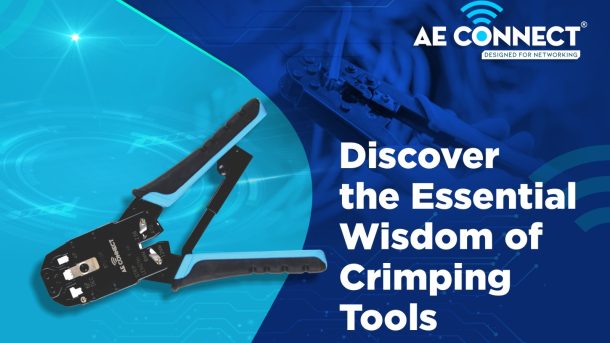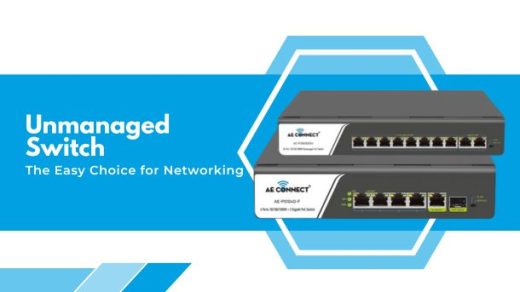Are you a networking technician or someone who enjoys tinkering with tools? If so, the Crimping Tool is something you must learn about!
Anybody who designs and implements chores in data infrastructure needs to have this useful tool. From seasoned IT engineers to tech-savvy individuals, anyone can benefit from learning how to use a crimping tool.
You’re in luck since this thorough article will introduce you to the world of crimping tools. Let’s get rolling!
What is a Crimping Tool?
A crimping tool, commonly referred to as a “crimper,” is a specialized hand tool built for the purpose of crimping a metal component (usually a connector or terminal) to provide a safe and dependable mechanical or electrical connection. This action is referred to as crimping.
Furthermore, a crimping tool also helps in removing the cable shielding
The Anatomy of a Crimping Tool
Let’s explore a crimping tool’s fundamental parts in more detail to see how it functions:
Handles:
Crimping tools typically have two handles, one for each hand, similar to pliers. These handles are used to apply force during the crimping process.
Jaws:
The jaws are located at the crimping tool’s business end. These are the components that press against the connection or terminal and come into contact with them to form the crimp.
Locking Mechanism:
Some crimping tools have a function to hold the connector or terminal in place while crimping is being done, creating a crimp that is dependable and secure.
Alright, as we have cleared up the basics, now let’s get to the important part: how to actually use this tool properly.
How to Use a Crimping Tool?
It takes a few steps to correctly use a crimping tool to make a solid and secure connection. Here is a general instruction on using a crimping tool:
1. Select the Correct Connector and Wire Size:
Begin by choosing the appropriate connector or terminal for your application. Ensure that the wire size and matches the connector’s specifications.
2. Prepare the Wire:
To expose the bare conductor, peel the insulation from the wire’s termination and The exposed wire’s length must comply with the connector’s standards.
3. Insert the Wire:
Insert the stripped end of the wire into the connector or terminal. Make sure it’s seated securely.
4. Position the Connector:
Place the connector or terminal in the jaws of the crimping tool, ensuring it’s properly aligned.
5. Crimping Tool the Connector:
Squeeze the handles of the crimping tool firmly and evenly. Apply enough pressure to deform the connector or terminal, but avoid over-crimping, which can damage the connection.
6. Inspect the Crimping Tool:
After crimping, inspect the connection visually. Ensure that the wire is securely held by the connector or terminal, with no exposed conductor.
7. Test the Connection:
If possible, test the connection to ensure it’s conducting electricity or transmitting signals correctly. This step is crucial for applications like electrical wiring and networking.
8. Repeat for Multiple Connections:
If you have multiple connections to make, repeat the process for each one, using the appropriate connector and die for each application.
9. Properly Store Your Crimping Tool:
If required, clean your crimping tool after use, then put it somewhere dry and secure. It will continue to function well for many years if you keep it in proper condition.
AE Connect: Your Trusted Partner for Cutting-Edge Crimping Tools
In the ever-evolving world of networking and connectivity, precision is paramount. At AE Connect, we understand the importance of reliable tools to ensure seamless connections, and that’s why we design crimping tools that are cut above the rest.
From the moment you pick up an AE Connect Netorking tool, you’ll feel the difference in your hand – the ergonomic design ensures a comfortable grip, allowing you to work efficiently for extended periods.
When you choose us, you’re choosing reliability. Our crimping tools are built to withstand the rigors of professional use. They are not just tools; they are your partners in ensuring secure and dependable connections every time.
The AE Connect Advantage:
- Precision Engineering: Our crimping tools are calibrated to provide consistent, reliable results.
- Durability: Built to last, our tools are your long-term solution.
- Ergonomic Design: Comfortable grips for fatigue-free usage.
- Expert Support: Our team of experts is always ready to assist you.
Visit our website to explore our crimping tools and other products to elevate your connectivity game like never before!
Conclusion
Crimping tools are essential for a variety of tasks, including networking and telecommunications as well as designing and implementing duties in data infrastructure.
If you wanna make some legit connections, you gotta know your crimping tools inside and out. It’s super important to understand the different types and how to use them like a pro.
Whether you’re an experienced professional or just a DIY fanatic, having the right crimping tool and knowing how to use it can totally level up your projects.
So, the next time you face a wiring or cable termination task, have the knowledge and AE Connect crimping tool to tackle it with confidence.
Happy crimping!




